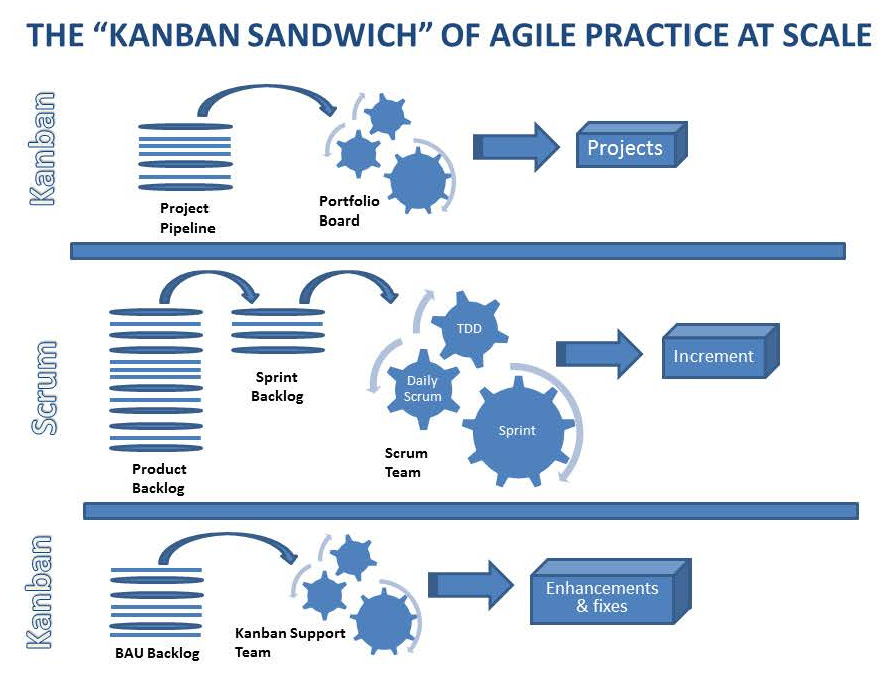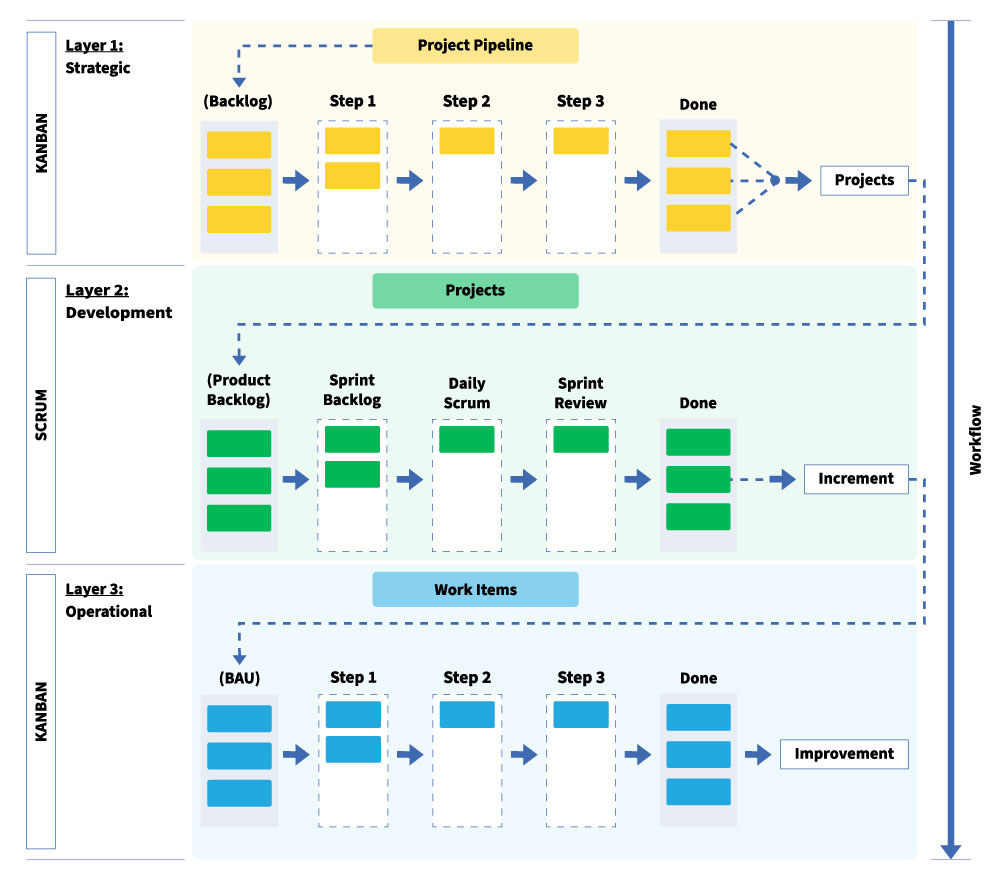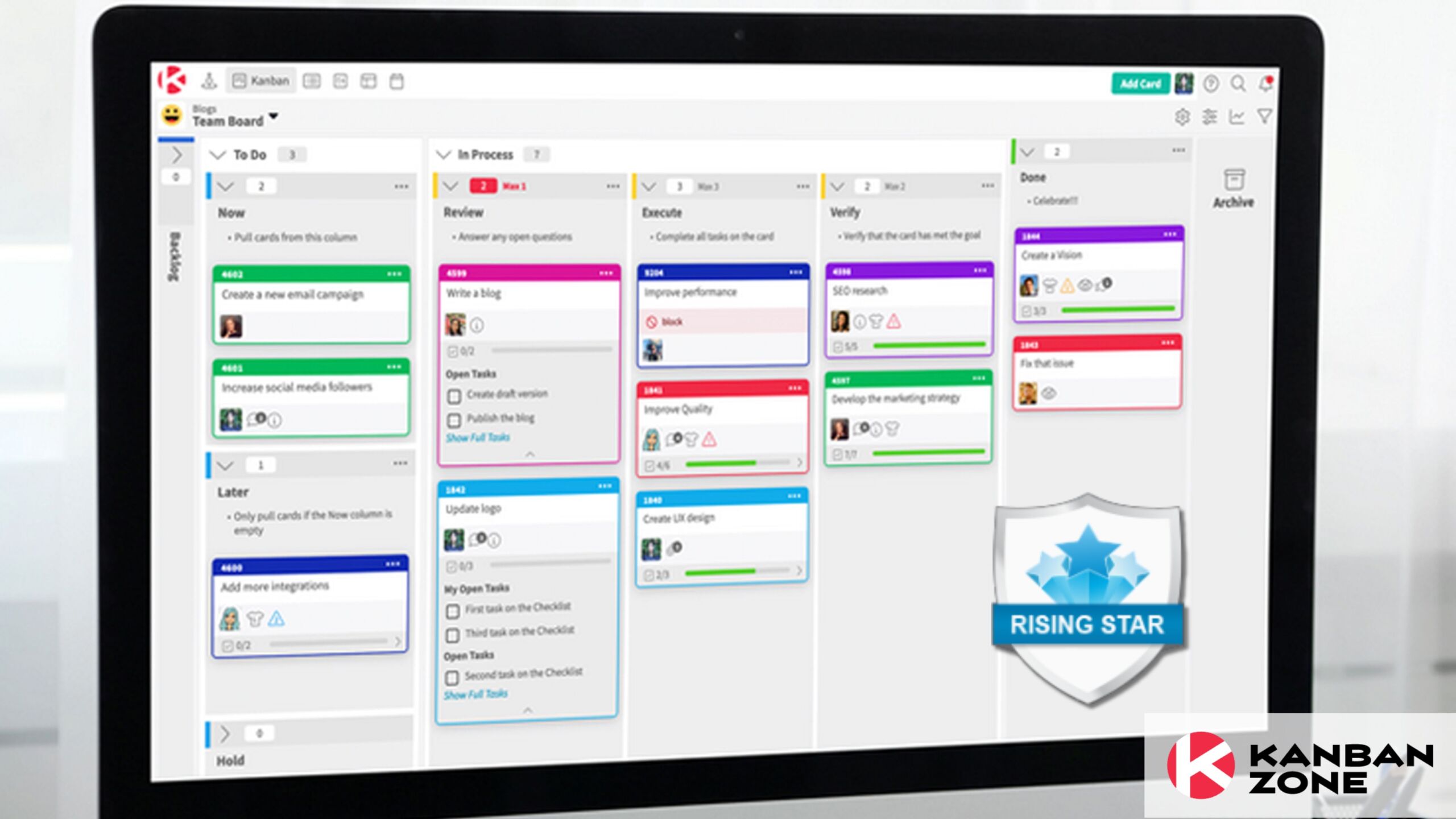
In recent years, certain patterns have emerged in the field of Scaled Agile Framework aiming at developing projects quickly and more efficiently. One good and fairly clear Agile pattern at enterprise level is the so-called Kanban Sandwich pattern, which is the main focus of this article and a great way of using Agile practices at scale.
Before getting into more details about the Kanban Sandwich pattern, it is important to get an overview of how companies can be structured, as this concept is also behind the Kanban Sandwich pattern.
Company level organization
Speaking generally, a regular company level organization usually consists of three layers, mainly, a strategic layer at the top, a development layer in the middle and an operational layer in the bottom of this organizational structure.
At the strategic layer (also known as the management layer) decisions are made by, for example, CEOs, executives and managers to identify which projects and programs of work are suitable to be implemented.
In the middle layer, named as development layer, project teams are responsible for developing the projects or products which have been aligned for delivery as proposed previously in the strategic layer.
Lastly, at the bottom layer (operational layer), the projects and products idealized by the development team are supported by the service operation teams.
What is the Kanban Sandwich?
The Kanban Sandwich can be understood as an Agile pattern derived from the arrangement of the three layers mentioned earlier, (management, development and operation) in a sandwich-like manner. Here, the term “sandwich” is characterized by two layers in which the Kanban method is employed (both at the upper and lower layers), whereas in the middle layer there is a Scrum-like method in operation by the development team.

The strategic layer is very often characterized by a straightforward workflow which may be modeled as proposed by the Kanban method. Initially, a pipeline presenting the total of programs and ideas that support the strategic goals of the company is set up. In other words, the pipeline can be interpreted as a kind of backlog of ideas that managers believe the company needs to accomplish in order to achieve strategic commitments. These ideas can now be fed in a Kanban board where they are processed and validated by the managers. Once approved, the ideas are converted into projects which are made available for the next layer.
In the development layer, the projects approved earlier by the managers need to be carried out. As the delivery of a project is often associated with many risks and uncertainties concerning, for example, product characteristics, product functions, and many others, in the development layer a straightforward workflow in the way noted for the strategic layer may not be suitable. In this case, a Scrum-like method is often considered more advantageous as project teams may need intermediate goals to accomplish so that they can fulfill a specific purpose (sprint goal) and deliver each required project increment.
In the lower layer of the Kanban sandwich project tasks are subjected to operation and maintenance by the operation teams which usually have a backlog of work composed of “business as usual” (BAU) tasks. These kinds of tasks can also be modeled as proposed by the Kanban method.
How to Use Kanban in Agile Practice at Scale
The use of the Kanban method embedded in the layers of the Kanban Sandwich pattern shown earlier can be supported through appropriated digital Kanban boards in each of the three layers of this Agile pattern.

In the strategic layer, a portfolio Kanban board can be employed in order to better help managers in decision-making activities to define potential projects in the company. On the other hand, the project management-related tasks in the development layer can also take advantage of a specific Kanban board embedded in this layer as well as in the operational layer of the Kanban Sandwich pattern.
The use of digital Kanban boards in these layers of the Kanban Sandwich pattern can afford a better understanding of the process workflow that is conducted in the respective layers, as well as the possibility of visualizing critical process steps and possible bottlenecks that may arise in the whole process. This in turn can help to spot critical aspects in the workflow of the layers, thus contributing to continuously improving the process where needed.
Learn to Work Smarter, Not Harder!
Get our top articles weekly.
Table Of Contents
Discover many more posts…







